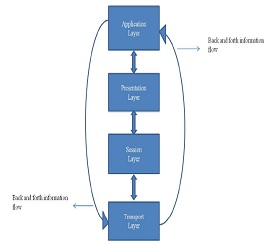Cross Layer Design and Energy Efficient Protocol for Wireless Sensor Network
DOI:
https://doi.org/10.54741/asejar.2.1.3Keywords:
cross-layer design, optimization, gainAbstract
The Open System Interconnection (OSI) layered protocol model divides networking tasks into layers and defines a set of services for each layer to be provided individually. The design of the protocol makes the services realized for different layers, no direct Communication between nonadjacent layers is permitted as the architecture forbids such an action, also communication is limited to procedure calls and responses between adjacent layers. Whereas the cross layer design violates the reference architecture, by allowing direct communication between protocols at non adjacent layers. It also allows sharing variables between layers, which gives it a better performance in the area of wireless communication. In order to support better usage of wireless users the cross layer design paradigm has been proposed. This paper covers definition, proposed designs, evaluation, challenges and research issues of cross-layer design.
Downloads

Published
How to Cite
Issue
Section
ARK
License
Copyright (c) 2023 Asdaque Rahim

This work is licensed under a Creative Commons Attribution 4.0 International License.
Research Articles in 'Applied Science and Engineering Journal for Advanced Research' are Open Access articles published under the Creative Commons CC BY License Creative Commons Attribution 4.0 International License http://creativecommons.org/licenses/by/4.0/. This license allows you to share – copy and redistribute the material in any medium or format. Adapt – remix, transform, and build upon the material for any purpose, even commercially.










